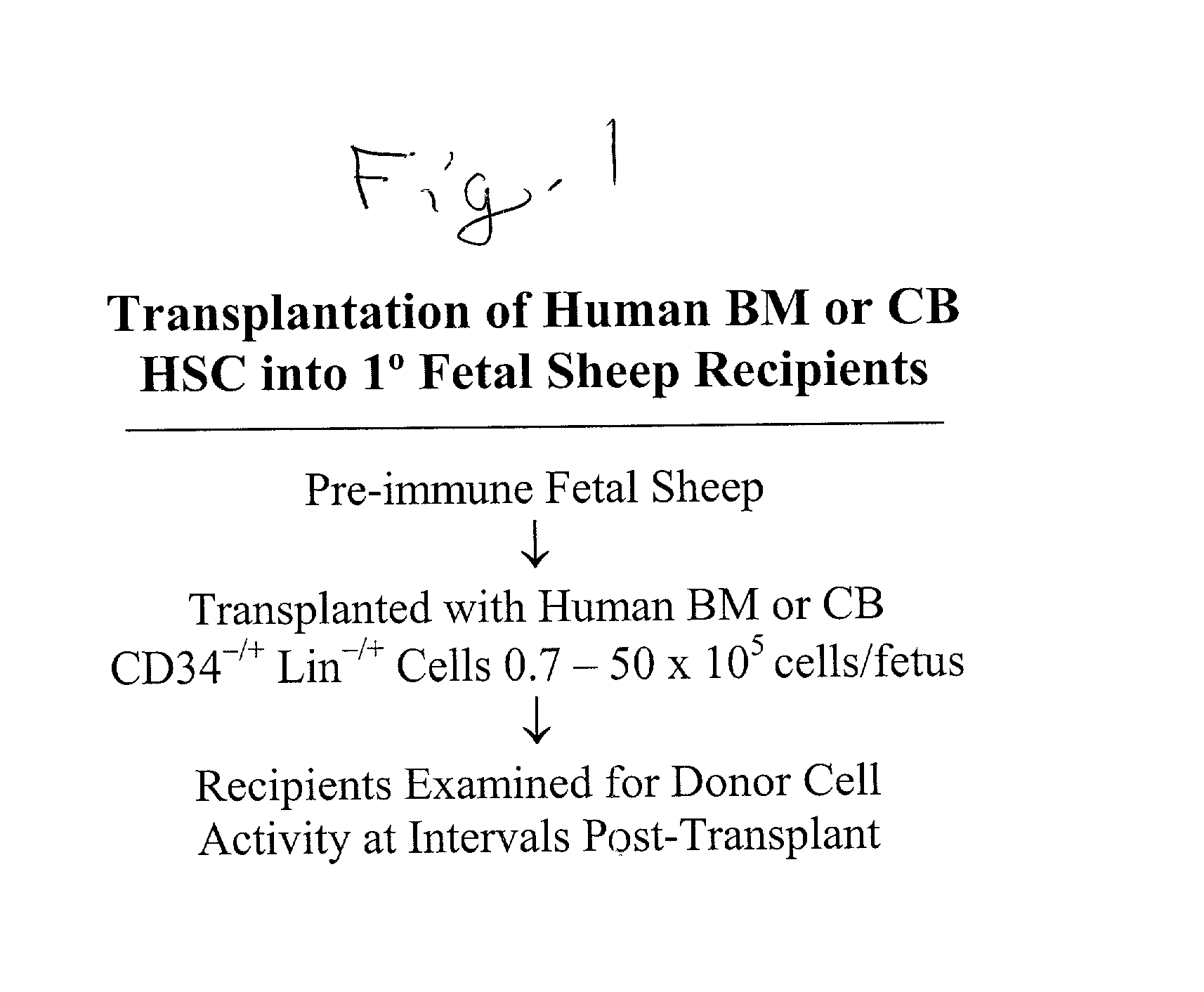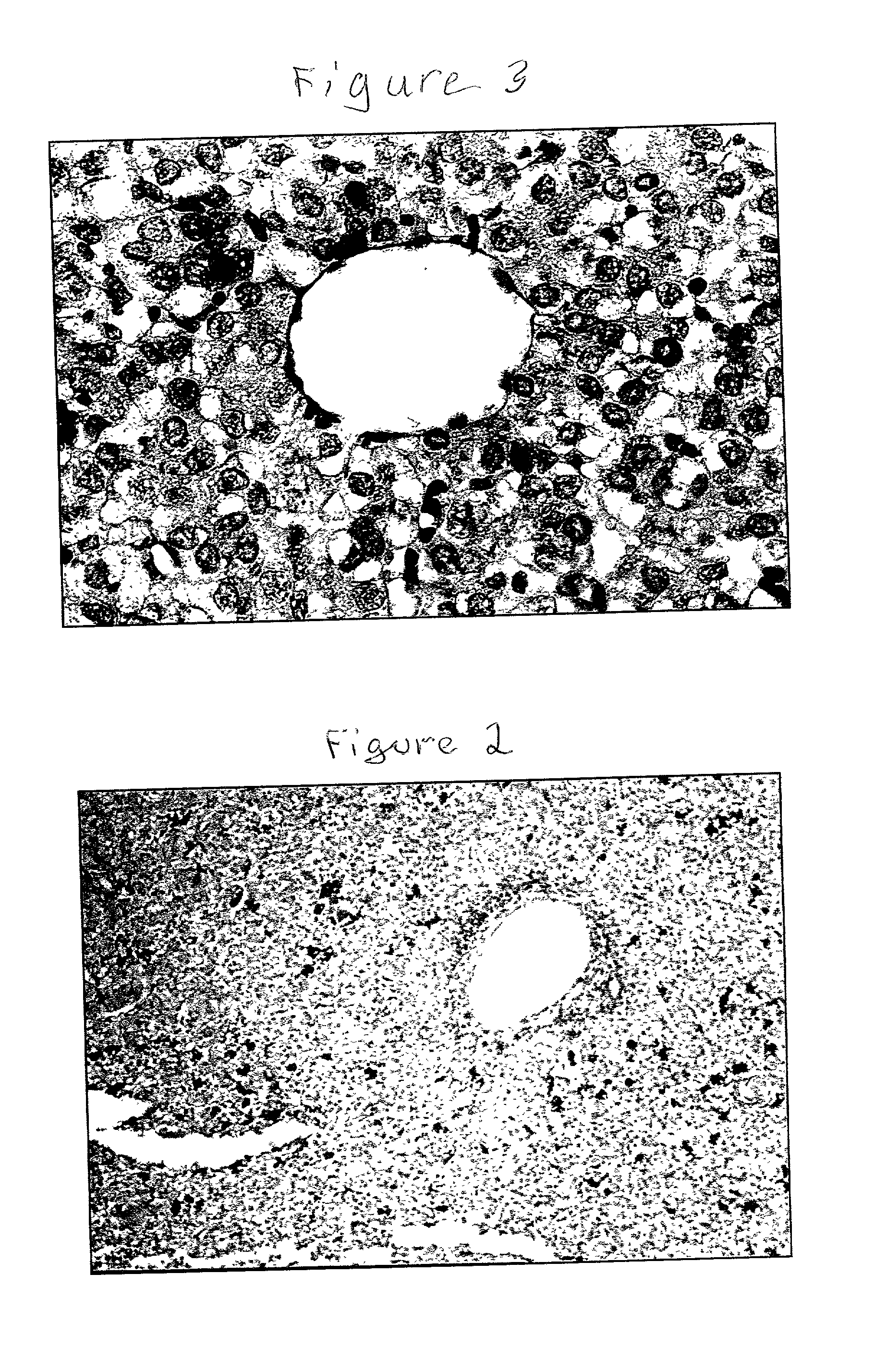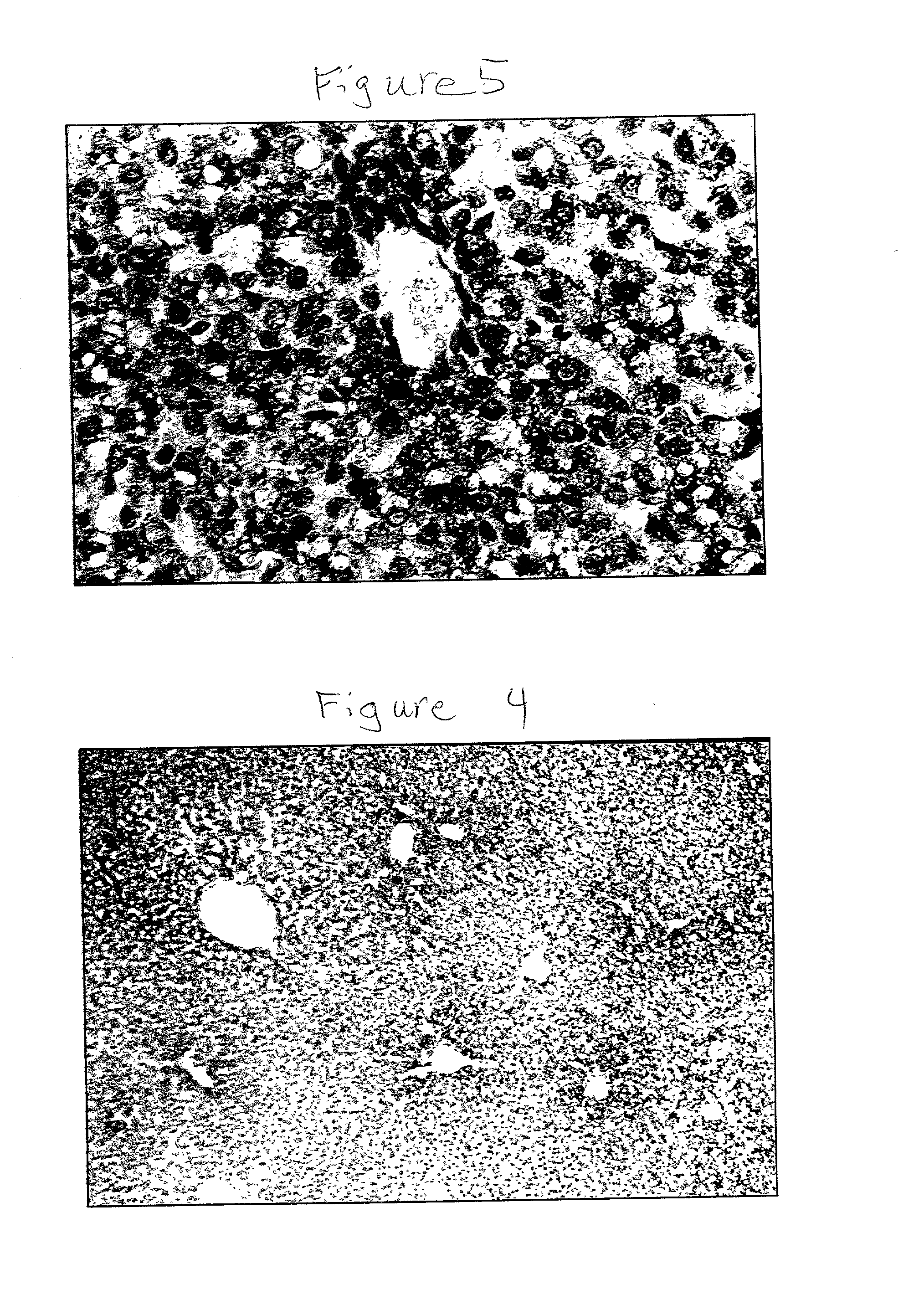Production of typed human cells, tissues and organs
a typed human and tissue technology, applied in the field of human-animal hybrid organs and human-animal hybrid organs, can solve the problems of lack of donors, unanswered questions about human stem cell populations, and limited non-human donors and recipients of the above-discussed studies
- Summary
- Abstract
- Description
- Claims
- Application Information
AI Technical Summary
Benefits of technology
Problems solved by technology
Method used
Image
Examples
example 2
[0064] In this experiment, transplanted HSC produced human hepatocytes, which synthesized human albumin and were functional five weeks after transplantation. To detect human albumin we used a commercially available monoclonal anti-human serum albumin (Sigma). As can be seen in FIG. 15, liver from negative control sheep (i.e., sheep not transplanted with human HSC in utero) did not react with the antibody (left panels). By contrast, normal human liver showed a significant level of human albumin production (lower right panel). Similarly, livers from animals transplanted (chimeric sheep) with human BM CD34.sup.+, Lin.sup.- cells exhibited positive reaction with this antibody (middle panels).
[0065] FIG. 16 shows the level of hematopoietic engraftment as well as human hepatocyte and human albumin activity (upper left panel) and human hepatocyte activity (lower left panel) in the liver of an animal transplanted with human BM CD34.sup.+, Lin.sup.- cells at three weeks after transplant. In ...
example 3
[0066] In another experiment, different highly purified populations of human BM HSC were evaluated for their hematopoietic and hepatopoietic activity in sheep (FIG. 17). Sheep were implanted with human BM CD34.sup.+, FLT-1.sup.+ or CD34.sup.+, W7.sup.+ cells (FLT-4 and W7 antibodies obtained from Hans Buehring, University of Tubingen, Germany); and at two months post-transplant the BM and livers were evaluated for hematopoietic and hepatopoietic activity respectively. In this case there was little correlation between these two activities. Both cell types provided detectable hematopoietic activity but very little, if any hepatopoietic activity.
[0067] More extensive work was undertaken to more precisely identify phenotypes of human HSC with hepatopoietic potential. Ten different cell types from CB or BM were transplanted and evaluated at two months post-transplant for hematopoietic and hepatopoietic development. FIG. 18 summarizes the results of transplanting comparable numbers of hum...
PUM
| Property | Measurement | Unit |
|---|---|---|
| Fraction | aaaaa | aaaaa |
| Fraction | aaaaa | aaaaa |
| Fraction | aaaaa | aaaaa |
Abstract
Description
Claims
Application Information
 Login to View More
Login to View More - R&D
- Intellectual Property
- Life Sciences
- Materials
- Tech Scout
- Unparalleled Data Quality
- Higher Quality Content
- 60% Fewer Hallucinations
Browse by: Latest US Patents, China's latest patents, Technical Efficacy Thesaurus, Application Domain, Technology Topic, Popular Technical Reports.
© 2025 PatSnap. All rights reserved.Legal|Privacy policy|Modern Slavery Act Transparency Statement|Sitemap|About US| Contact US: help@patsnap.com



